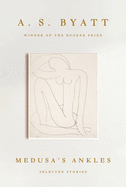
| Publisher: | Knopf | |
| Genre: | Short Stories (single author), Literary, Gothic, Fiction | |
| ISBN: | 9780593321584 | |
| Pub Date: | November 2021 | |
| Price: | $29 |
| Fiction |
by A.S. Byatt
Medusa's Ankles collects mesmeric, tantalizing short stories from over the course of Man Booker Prize-winning author A.S. Byatt's career. In "The July Ghost," a tenant discovers he is the only person who can see the ghost of his landlord's dead son, while in "Precipice-Encurled," a painter develops an obsession with the woman he is sketching. Other stories focus more explicitly on the horrific and transcendent experiences of the female body, as with "A Stone Woman," which explores the transformation of a woman to literal stone after the death of her mother, and the titular "Medusa's Ankles," which follows the thoughts of one woman in a salon chair as she free-associates about her hairdresser and the Matisse print hanging nearby.
As in her novels, Byatt's (Possession; Peacock & Vine) shorter works display her fluent, luminous prose. Even in her most realistic stories, dark and glittering descriptions--"matt, brick, cream, a grape-dark sheen on the claw-ends, a dingy, earthy encrustation on the hairy legs"--bewitch readers into an otherworldly experience. While some pieces, such as "Dragon's Breath," make their connection to fairy tales overt, all of Byatt's stories ask readers to consider the imaginative connections that reside alongside everyday life. Whether focused on unsettling feminist truths in "The Chinese Lobster" and "Dolls' Eyes," or meditating on loss through a transformed experience of the body in both "A Stone Woman" and "Medusa's Ankles," Byatt is always glancing backward while she is looking ahead, forging the connective tissue between old tales and new ones in a celebration of the power of storytelling. --Alice Martin, freelance writer and editor
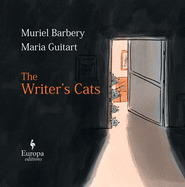
| Publisher: | Europa Editions | |
| Genre: | Humorous, General, Fiction | |
| ISBN: | 9781609457167 | |
| Pub Date: | November 2021 | |
| Price: | $16.95 |
| Fiction |
by Muriel Barbery, trans. by Alison Anderson, illust. by Maria Guitart
In 2008, French author Muriel Barbery burst onto the literary scene with The Elegance of the Hedgehog, a lyrical, richly imagined novel about a Parisian apartment building concierge and a precocious 12-year-old tenant. Both lead lives of quiet desperation. In the years since, Barbery has continued to deliver stories (A Strange Country) featuring her distinctive blend of gentle satire and magical realism, and continues to win global readership.
In The Writer's Cats, Barbery launches her most playful story yet, focusing on herself and unraveling the "mysterious, confounding" life of a writer. This short, frisky novel is told from the imagined perspective of one of her beloved cats, Kirin--named for the Japanese beer. The four-year-old "fatal beauty" is one of a quartet of Barbery's felines, who all believe they are her esteemed protectors and literary advisers. The tribe includes three other Chartreux cats, with gray fur and orange eyes, which pair perfectly with the décor of the author's Parisian home. This color scheme is further emphasized in whimsical illustrations and visual wit by Maria Guitart.
Kirin's endearing narrative voice encapsulates the story of the author's literary ascendancy and shares glimpses of her day-to-day life, while also touching upon Barbery's relationships with her husband, friends and confidantes. The distinct charms of the four cats--along with their tail-waving antics--work together to drive Barbery's writing life and ultimately dictate the direction of her literary pursuits. Creative types of all stripes--especially cat lovers--will be enchanted by Barbery's fun and delightfully philosophical storytelling. --Kathleen Gerard, blogger at Reading Between the Lines
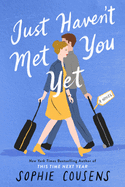
| Publisher: | Putnam | |
| Genre: | Women, Romantic Comedy, Romance, Contemporary, Fiction | |
| ISBN: | 9780593331521 | |
| Pub Date: | November 2021 | |
| Price: | $16 |
| Romance |
by Sophie Cousens
Sophie Cousens (This Time Next Year) has created a wonderfully layered story of love and loss in Just Haven't Met You Yet. It begins when Laura Le Quesne (rhymes with Chesney), a lifestyle reporter whose parents fell in love in the Channel Islands, heads to Jersey to research their history for an article she's writing. Flustered by memories of her late parents, Laura accidentally grabs the wrong suitcase off the luggage carousel. In the suitcase she finds a copy of her favorite book, sheet music by her favorite artist, expensive men's shoes and a thick cable-knit men's sweater. She decides that this is it: she's accidentally swapped suitcases with her soulmate.
Laura enlists a taciturn cabbie to help her track down the owner of the suitcase, and things hilariously spiral from there. She does an Instagram Live with a grumpy beekeeper, accidentally witnesses two retirees having sex and starts to discover that there's more to Ted, the cabbie, than meets the eye. And as she hunts for her mystery man, Laura also begins to learn more about herself, beginning with the fact that Le Quesne, a common Jersey name, is pronounced Le Cane. If she doesn't even know her own name, what else does Laura not know?
Introspective and charming, Just Haven't Met You Yet perfectly blends funny, awkward moments with Laura's journey of self-discovery. Fans of Mhairi McFarlane or Sophie Kinsella are sure to love it. --Jessica Howard, bookseller at Bookmans, Flagstaff, Ariz.
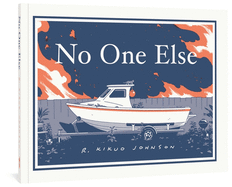
| Publisher: | Fantagraphics | |
| Genre: | Contemporary Women, Literary, Comics & Graphic Novels | |
| ISBN: | 9781683964797 | |
| Pub Date: | November 2021 | |
| Price: | $16.99 |
| Graphic Books |
by R. Kikuo Johnson
In the 15 years since his 2006 graphic book debut with the award-winning Night Fisher, R. Kikuo Johnson's titles have been precious few even as his detailed art becomes increasingly recognizable on New Yorker covers. His third book, No One Else, might seem spare at just over 100 pages, but Johnson elegantly, effortlessly demonstrates that "a picture equals a thousand words." Shades of greyish blue and white, with warning orange highlights, fill Johnson's precise panels, revealing a multi-layered story of family dysfunction, stunted ambition and thwarted independence, set in his native Maui.
Charlene does too much: she's a full-time hospital nurse, her elderly father's primary caregiver, her son Brandon's single parent, a chef, housekeeper, her co-worker's only ride (although the ingrate falsely blames their tardiness on Charlene). When an accident suddenly kills Charlene's father, she withdraws into utter denial. Brandon is left to clean up, get organized and feed himself while Charlene relentlessly taps at her computer--she's quit her job and is applying to med school. Her peripatetic musician brother, Robbie, shows up, perhaps more hindrance than help. But family is family, and life goes on.
On almost every page, Johnson's art-enhanced storytelling is a marvel: a smear of orange cheese puff slobber across Batman the cat's head presages danger, at least temporarily; Charlene's careful preparation of Brandon's comical lunch mirrors her devotion; the bag of uncooked rice can't save Charlene's ramen-soaked computer; a dead man's leftovers are displayed for sale; the replacement of quilt for sleeping bag on Brandon's bed marks great change. Johnson visually manifests penetrating observations and textually adds lingering poignance, resulting in an undeniable graphic success. --Terry Hong, Smithsonian BookDragon
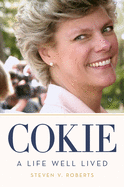
| Publisher: | Harper | |
| Genre: | Biography & Autobiography, Women, Editors, Journalists, Publishers, Rich & Famous | |
| ISBN: | 9780062851475 | |
| Pub Date: | November 2021 | |
| Price: | $27.99 |
| Biography & Memoir |
by Steven V. Roberts
Throughout their 53-year marriage, Cokie and Steven Roberts declared they were "crazy nuts" about each other, and in his memoir, Cokie: A Life Well Lived, his sorrow at her 2019 death is unmistakable, as is his devotion to her memory. Her career as a renowned journalist spanned more than 40 years, but she was foremost "a wife and mother, a sister and daughter, a neighbor and friend, a real person with a real dog who did her own grocery shopping."
Cokie repeatedly shattered glass ceilings, including as a "founding mother of NPR," and as the first permanent woman on Sunday morning's This Week roundtable, early in her 32 years at ABC News. The daughter of Louisiana Democratic Representative Hale Boggs and Lindy Boggs, who succeeded him, Cokie grew up among Washington leaders and loved the Capitol. A fiercely bipartisan journalist and a committed feminist, "she always asked more questions about funding for mammograms than for MX missiles," Roberts notes, and she relentlessly supported workplace equality.
Fairness was the basis of their marriage, too. Deeply in love, Cokie, a devout Catholic, and Steve, who is Jewish, almost didn't marry, but "we shared values if not theologies," Roberts says. Determined to honor both religions, she soon was dubbed "the best Jew in the family," famed for her Hanukah parties and seder dinners, while never missing Sunday Mass. Cokie cites countless professional achievements, but these are overshadowed by the eulogistic recollections of colleagues and friends. Roberts hopes these stories "inspire you to be more like Cokie, to be a good person, to lead a good life." --Cheryl McKeon, Book House of Stuyvesant Plaza, Albany, N.Y.
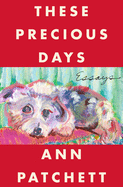
| Publisher: | Harper | |
| Genre: | Biography & Autobiography, Women, Literary Figures, Literary Collections, Essays | |
| ISBN: | 9780063092785 | |
| Pub Date: | November 2021 | |
| Price: | $26.99 |
| Starred | Essays & Criticism |
by Ann Patchett
Ann Patchett (This Is the Story of a Happy Marriage) ties together the 22 essays in These Precious Days in surprising ways, building to moving moments with layers of complexity.
In the opening piece, "Three Fathers," a photograph captures the author with her biological father and two stepfathers. Patchett's father recalls that Mike, her aspiring-writer stepfather, said to the other two men, "You know what she's doing, don't you? She's going to wait until the three of us are dead and then she's going to write about us. This is the picture that will run with the piece."
The entire collection, written in the throes of the pandemic, and thus contemplating humanity's fleeting time on earth, brims with humor and humility. "How to Practice," an essay about letting go of things no longer essential ("I had miscalculated the tools of adulthood when I was young, or I had miscalculated the kind of adult I would be") ties into Patchett's treasured typewriters, which connects to her reading Tom Hanks's Uncommon Type, which leads to his audio recording of The Dutch House--and her friendship with Sooki Raphael, Hanks's personal assistant.
The story of Patchett's friendship with Sooki gives the book its title and provides its through line. Sooki's savoring of days, rediscovery of her art and appreciation of their newfound friendship reverberate with Patchett's husband's love of flying and his brush with mortality ("The Moment Nothing Changed"). Their cautious optimism very much draws a parallel with emerging from the cocoon that the pandemic forced upon the world. This collection--both of its time and also timeless--is to be treasured. --Jennifer M. Brown, senior editor, Shelf Awareness
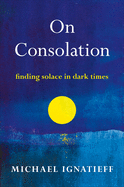
| Publisher: | Metropolitan Books | |
| Genre: | Self-Help, Death, Grief, Bereavement, Ethics & Moral Philosophy, Religion, General, Philosophy | |
| ISBN: | 9780805055214 | |
| Pub Date: | November 2021 | |
| Price: | $26.99 |
| Religion |
by Michael Ignatieff
To be consoled, writes historian, professor and former politician Michael Ignatieff, is "to be reconciled to one's losses, to come to terms with one's shame and regrets, and to feel, despite everything, alive to the beauty of life." Amid the global upheaval due to the Covid-19 pandemic, these words, and the premise of this book, are a poignant reminder that to seek consolation or comfort is, in many ways, one of the most universally human things one can do.
Ignatieff traces a particularly Western history of the ideology of consolation, how it has been conceived and reconceived across time and belief systems, and across media from religious writings and essays to music, painting and poetry. He begins with the Book of Job and the Book of Psalms, and then makes a historical progression forward through the works of thinkers, writers and artists such as Cicero, Dante, El Greco, Montaigne, Mahler and Camus, before ending with Cicely Saunders, who founded the modern hospice. In doing so, Ignatieff grapples with ideas of consolation in religion and in secular thought, to come to the conclusion that it is not faith itself that necessarily brings consolation, but the knowledge that whatever one might be experiencing has also been experienced by others, that someone else has also borne witness to one's pain, grief or distress. Above all, Ignatieff reminds readers that consolation as an action brings people together in ways that can renew hope when they might otherwise lose it altogether, at a pertinent moment in history. --Michelle Anya Anjirbag, freelance reviewer
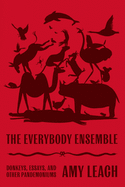
| Publisher: | Farrar, Straus and Giroux | |
| Genre: | Nature, Life Sciences, Animals, Science, General, Ecology, Essays | |
| ISBN: | 9780374109660 | |
| Pub Date: | November 2021 | |
| Price: | $26 |
| Starred | Nature & Environment |
by Amy Leach
With The Everybody Ensemble: Donkeys, Essays, and Other Pandemoniums, Amy Leach (Things That Are) takes readers on a playful, rigorous, mind-bending romp through human nature, the natural world, spirituality and more. Her perfectly singular voice sings the most surprising notes in an imaginative blend of silliness and seriousness.
This sophomore collection of 23 essays opens with the title piece, in which the narrator welcomes all 20 quintillion animals to the Everybody Ensemble. Leach glories in lists of the unlikely, the weird and the underappreciated: "speckled and plain, perfect and imperfect, indigo-feathered, green-skinned, orange-toed, squashed of face, cracked of shell, miniature of heart, young as ducklings, old as hills, everybody raise your sweet and scrapey, bangy, twangy, sundry, snorty voices." Leach is adept at wordplay, but her writing goes much deeper than that, wondering and speculating at larger questions. In "The Wanderer," she considers how to critique the extravaganza show called Earth. The artist of this show has strengths (facility and versatility), but "imagination unchecked can result in a mishmash." If only "we could just establish the genre, whether this is supposed to be comedy or tragedy or romance or what," we could make sense of the effort.
Don't be misled by her joyful absurdity or wit with words: Leach is deadly serious in her questioning of the cosmos, Earth's composer and whether "even with all the troubles of our time, maybe it can still be fun to be a frog." She is smart, effervescent, earnest and funny. Her voice is perfectly unmistakable, her themes expansive; her prose glitters. The Everybody Ensemble is a revelation. --Julia Kastner, librarian and blogger at pagesofjulia

| Publisher: | Grove Press | |
| Genre: | Biography & Autobiography, Rock, Music, Genres & Styles | |
| ISBN: | 9780802157911 | |
| Pub Date: | November 2021 | |
| Price: | $30 |
| Performing Arts |
by Marc Myers
In Rock Concert: An Oral History as Told by the Artists, Backstage Insiders, and Fans Who Were There, music writer Marc Myers (Anatomy of a Song) gathers insights from nearly 100 people who have had something to do with making live rock happen over the years. Collectively, their observations tell the story of the rock concert--Angus Young's shorts and all.
Myers has musicians, promotors, managers, photographers, costume designers and others weigh in on the live rock show, whose early-1950s launch proved to be an unintended agent of racial desegregation, thanks to the music's appeal to young people of all backgrounds. Major developments that helped keep folks paying good money for live rock included the wireless electric guitar, which allowed musicians total freedom onstage; MTV, which fomented viewer interest in seeing their idols in person; and Ticketmaster, which enabled fans to buy concert tickets without leaving home.
Myers's book covers the requisite history-making gigs--the Beatles at Shea Stadium; the defiantly electric Bob Dylan at the Newport Folk Festival; Woodstock and its foil, Altamont--and concludes with reflections on 1985's Live Aid, which manager Shep Gordon believes marked "the end of innocence. Businesses finally saw how concerts could be scaled up." Yet Rock Concert is anything but a bummer, rife as it is with firsthand accounts of those livin' the rock dream, sort of. Who would have guessed that after a performance Ian Anderson of Jethro Tull liked to hole up in his hotel room with an Agatha Christie novel? --Nell Beram, author and freelance writer
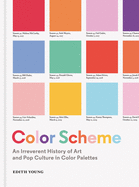
| Publisher: | Princeton Architectural Press | |
| Genre: | Art, Popular Culture, Color Theory | |
| ISBN: | 9781616899929 | |
| Pub Date: | November 2021 | |
| Price: | $24.95 |
| Art & Photography |
by Edith Young
In his foreword to Color Scheme: An Irreverent History of Art and Pop Culture in Color Palettes, Zachary Fine writes of the effect Edith Young's work has: "I see the contents of my visual life arrayed before me according to color, and it's as if I've entered the world at a secret angle." Young's work brings her keen photographer's eye to readers, isolating colors from paintings and showing the swatches anew. She writes, "While these palettes can be enjoyed for the color alone, the ongoing research project is committed to showing viewers new ways of thinking about artists' oeuvres and larger arcs in art history. Art and art history can be a bit intimidating, and I like creating an entry point that sets the tone with a sense of irreverence."
The book is accessible, focusing not only on art history but on color deployment in popular culture. The grids of the palettes are pleasing, in some ways built for the Instagram era, offering a simple path to learning about complex topics. Here, palettes reflecting, say, the reds of caps in Renaissance portraits and the color of blush used on the cheeks of François Boucher's portrait of Madame de Pompadour can be found alongside descriptions of the colorways of Le Creuset's iconic cookware, the exterior colors used by Jeep in 1973 and Tonya Harding's competitive figure skating outfits. By using typological categorization and by drawing attention to small details across a category, Young encourages readers to think about color more deliberately. --Michelle Anya Anjirbag, freelance reviewer
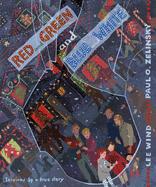
| Publisher: | Levine Querido | |
| Genre: | Friendship, Christmas & Advent, Holidays & Celebrations, Religious, Social Themes, Juvenile Fiction, Hanukkah, Prejudice & Racism, Jewish | |
| ISBN: | 9781646140879 | |
| Pub Date: | October 2021 | |
| Price: | $17.99 |
| Starred | Children's & Young Adult |
by Lee Wind, illust. by Paul O. Zelinsky
A community, inspired by a friend's show of support, acts in solidarity after a hate crime targets a Hanukkah celebration in this vibrant and compassionate picture book from Lee Wind and Paul O. Zelinsky.
Best friends and neighbors Isaac and Teresa have much in common, including their love of decorating for winter holidays. A bird's-eye view of their night-darkened neighborhood shows Isaac's house standing out: "On a block dressed up in Red and Green, one house shone Blue and White." Later that night, a stranger shatters Isaac's window with a rock, ostensibly targeting his family for their religion. After the police visit and the damage is repaired, Isaac bravely rekindles the menorah: "If they didn't, Isaac knew it would be like hiding they were Jewish." As snow falls, Teresa draws a menorah of her own, writing "For Isaac" above it, and mounts the artwork in her front window. Isaac is delighted, and Teresa's gesture resonates. "Their friends joined in. Then their school. And their library...."
Wind (No Way, They Were Gay?) uses clear language and concise sentences to impart this real-life, accessible example of courage and allyship. Minimal text amplifies the innocent tone at the beginning of the story while the prose both quickens and lengthens after the attack. Caldecott Medal winner and multiple Honor recipient Zelinsky (Rapunzel; Z Is for Moose) draws in readers through illustrations that shift perspective and scale across a mix of single- and double-page spreads. As much a how-to as a holiday tale, Wind and Zelinsky's offering gives young readers an inspirational, empathy-building story about honoring your identity and standing up against hate. --Kit Ballenger, youth librarian, Help Your Shelf
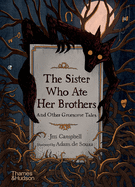
| Publisher: | Thames & Hudson | |
| Genre: | Horror, Ghost Stories, General, Legends, Myths, Fables, Short Stories, Juvenile Fiction | |
| ISBN: | 9780500652589 | |
| Pub Date: | November 2021 | |
| Price: | $19.95 |
| Children's & Young Adult |
by Jen Campbell, illust. by Adam de Souza
Anyone scrambling for a gift for their favorite morbid tween will be set with Jen Campbell and Adam de Souza's The Sister Who Ate Her Brothers: And Other Gruesome Tales. The 14 stories of gut-spilling and digit-losing are spine-tingling, hair-raising and sometimes even rib-tickling.
For this collection, Campbell (Franklin and Luna series), a fairy tale historian, has pulled together stories from around the globe and retained their grossness. In Nigeria's "The Daughter Who Loved a Skeleton," the titular creep raids a graveyard and collects body parts so that he can transform himself into the man of a young woman's dreams. In the Inuit "The Princess Who Ruled the Sea," an ice king cuts off his daughter's fingers after he finds out that she'd rather marry her dog than any of her father-approved suitors. Although the stories generally aren't concerned with moralizing, justice does at times prevail, as does a happy ending on occasion--just ask the spouse of the "controlling husband" in El Salvador's "The Wife Who Could Remove Her Head."
Cartoonist de Souza's comics-reminiscent style does nothing to defang the book's ghoulish subject matter. The most chilling illustration in The Sister Who Ate Her Brothers, which features black-and-white vignettes and full-page color art, may be a full pager in "The Kingdoms at the Center of the Earth," from Russia: it depicts four dolls with jack-o'-lantern-like heads forcing a young woman to fall through her bedroom floor. On the bright side, the tumble may just get her out of marrying her brother. --Nell Beram, freelance writer and YA author
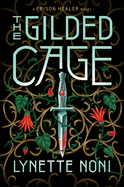
| Publisher: | Clarion/HarperCollins | |
| Genre: | Survival Stories, Epic, Dark Fantasy, Fantasy, Romance, General, Young Adult Fiction, Action & Adventure | |
| ISBN: | 9780358434597 | |
| Pub Date: | October 2021 | |
| Price: | $18.99 |
| Children's & Young Adult |
by Lynette Noni
This captivating sequel to Lynette Noni's The Prison Healer delivers political intrigue, a slow-burn romance and family drama.
It's been six weeks since 17-year-old Kiva Corentine escaped Zalindov prison with Jaren, Evalon's crown prince. Jaren helped her survive the "deadly Trial by Ordeal, a set of four elemental challenges" she'd undertaken to save her mother, the Rebel Queen. Now Kiva finds herself living with the royal family, the very people who stole her family's throne generations ago. After she secretly reunites with her long-lost siblings, Kiva is charged with garnering secrets to use against Jaren. As Kiva learns about the senselessly violent ways of the rebels and develops romantic feelings for the prince, she starts to feel conflicted, and ultimately faces a choice: Should she fulfill her familial obligation or follow her heart?
The Gilded Cage is part fantasy, part romance and part family drama, with meticulous storytelling. Noni takes her time setting up each moment, then hits readers with perfectly timed, tension-heightening scenes; for example, a jubilant festival crowd that swiftly turns into a suffocating, claustrophobic mob. She ebbs and flows between character development and heart-pounding action, and weaves into the plot complicated family dynamics among both the rebels and the royals. Through them, Noni examines sibling jealousy, the impact of a family member's addiction, and generational trauma, all of which help ground the fantasy in accessible themes. A carefully paced, fierce second book in the Prison Healer series. --Lana Barnes, freelance reviewer and proofreader